Our round-up from the UK Walking Summit 2025
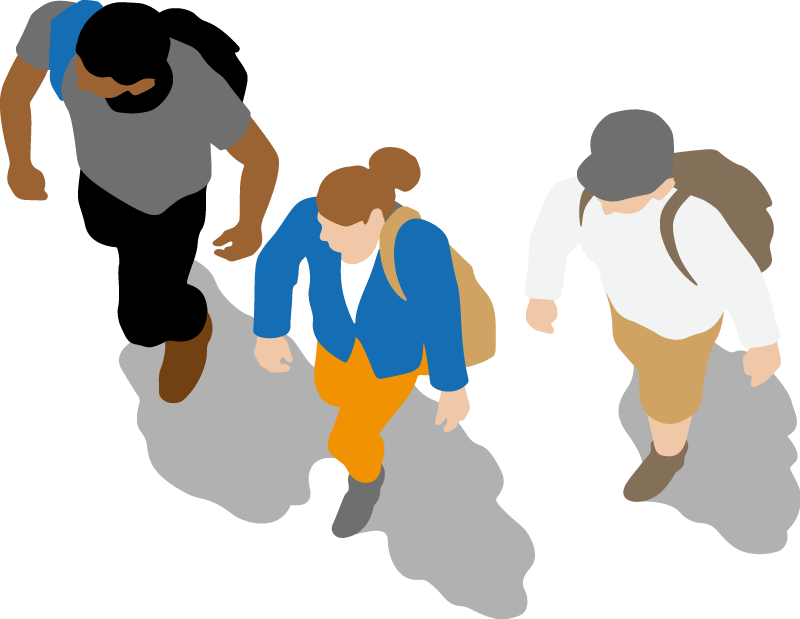
Living Streets’ UK Walking Summit 2025 took to Bristol (3 June), bringing together elected representatives, academics, campaigners and transport professionals who are reimagining our streets to be better places for walking and wheeling.
Our Campaigns and Public Affairs Coordinator, Zak Viney, shares some of the discussion from the day.
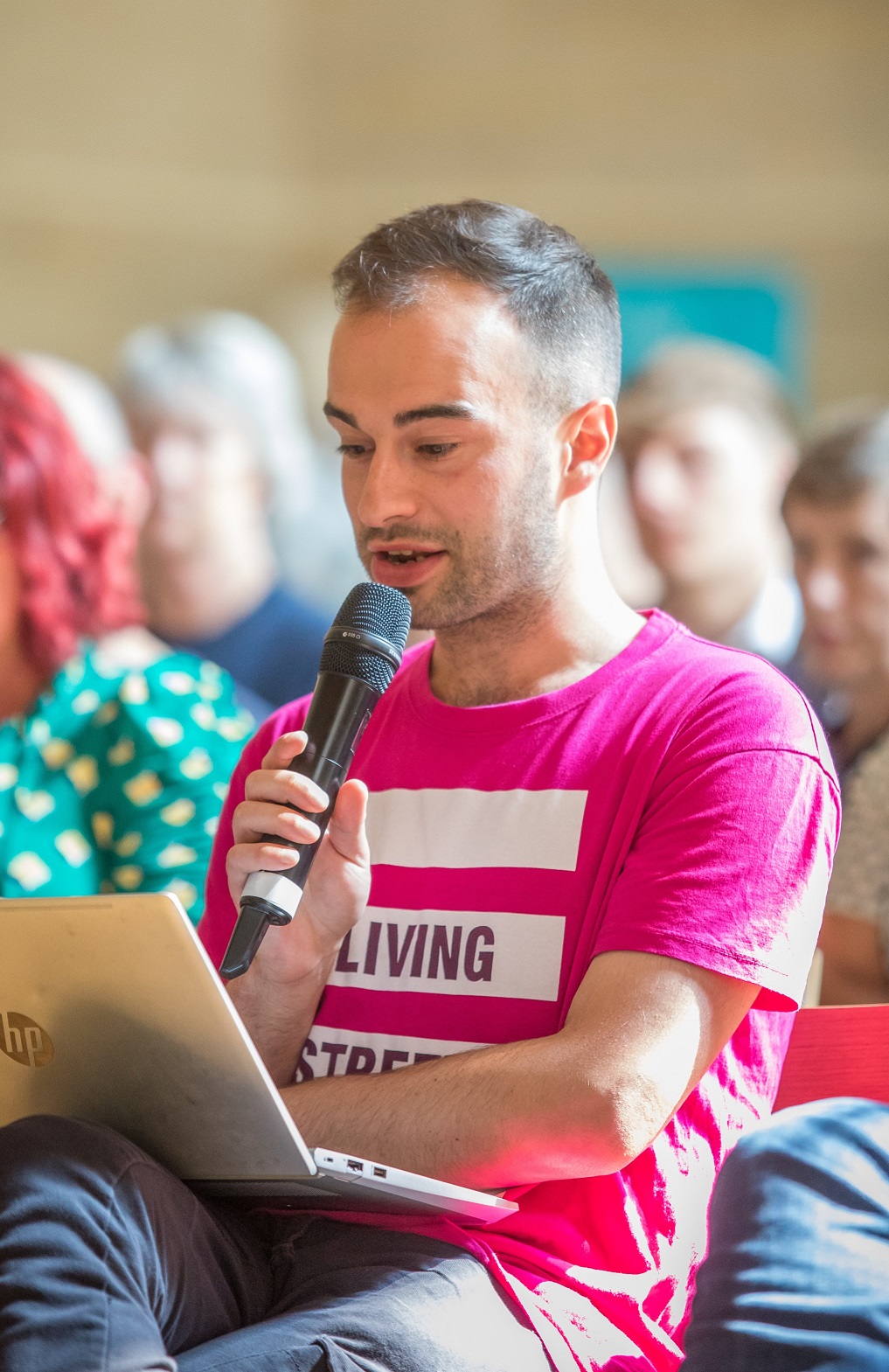
Our 2025 Summit asked: What does a thriving town and city centre look like? Following the launch of our Living Streets’ third Pedestrian Pound report in November 2024, the day focussed around the economic and wider benefits of investment in walkable town and city high streets.
This year, we invited James Lee, Director of Publica to chair our Summit. In his opening address, James shared his professional and lived experience in terms of race and disability and invited the audience to make three considerations throughout the day.
- “Nothing about us without us.”
- “Building things in is so much better than bolting them up.”
- “The ambition we hold for walkable streets is the floor, and not the ceiling, we build from.”
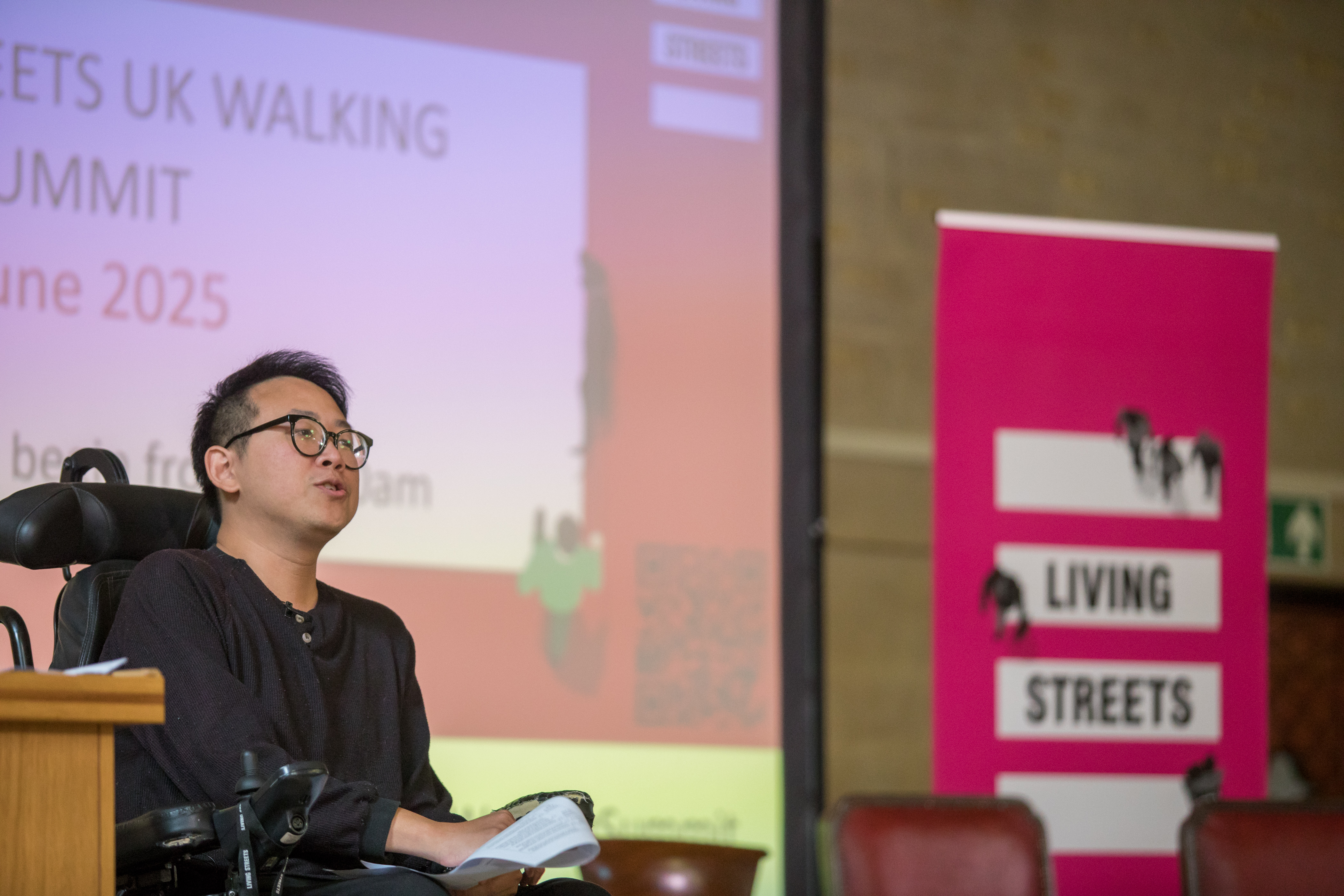
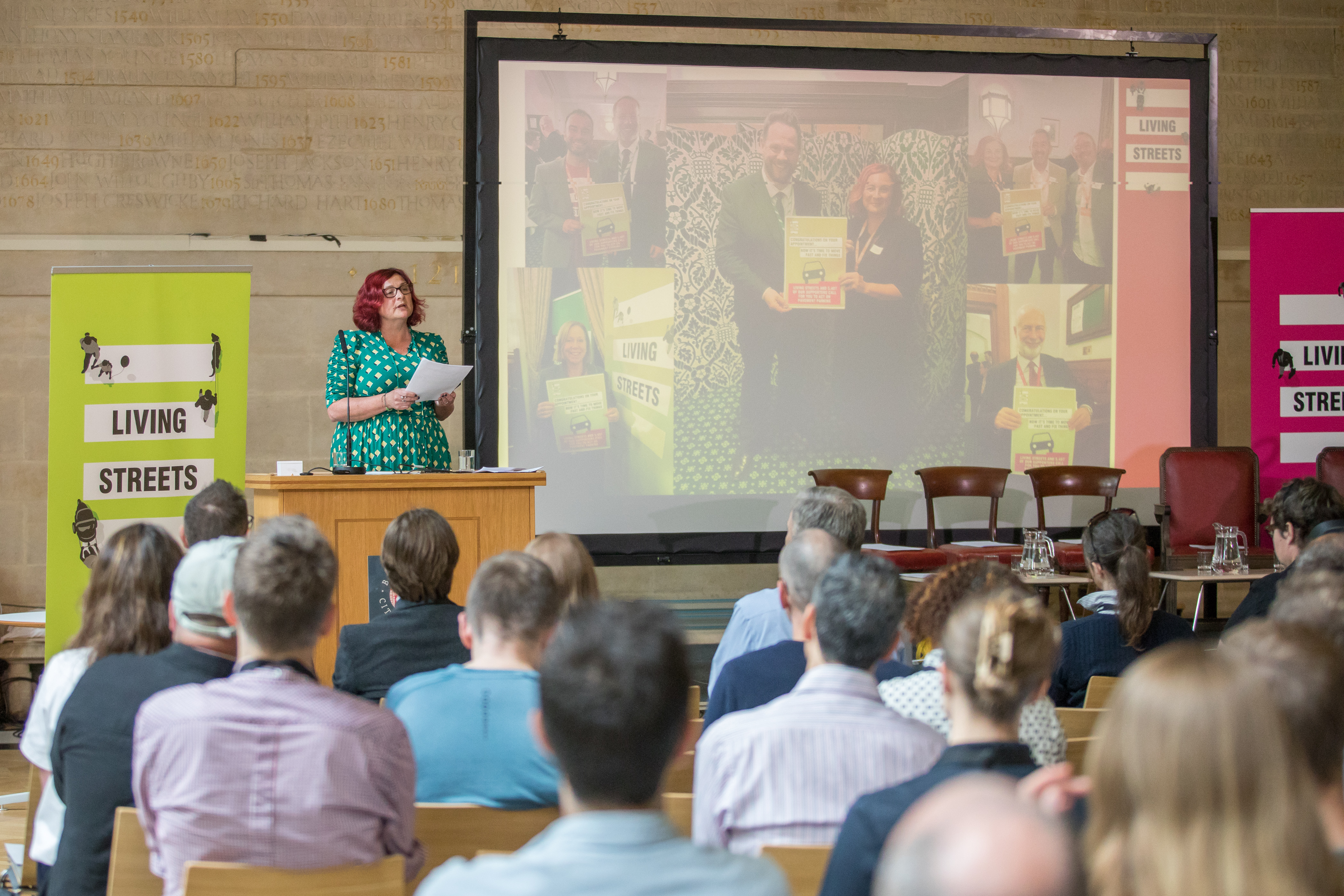
This optimistic tone was followed by Catherine Woodhead, CEO of Living Streets, who outlined our advocacy and delivery work that is helping to shape shifts to make our streets safer and more pleasant for pedestrians, including our calls for Safer Streets for All to be at the forefront of UK Government’s upcoming Road Safety Strategy.
Catherine also shared the wide benefits of our Walk to School Outreach programme across schools in England, which led to 17.8 million new walked or wheeled journeys in 2024-25 alone.
Catherine introduced the great opportunity regenerate our high streets through enabling walked journeys. We have a 14% high street vacancy rate in Britain, and 30% of all shopping takes place online. Living Streets’ Pedestrian Pound report demonstrates the immense value of investing in walkable communities to connect communities, boost local economies, create healthier environments and improve public health.
We were joined by Simon Lightwood MP, Minister for Local Transport, who shared the UK Government’s plans to invest over £300 million into new walking and cycling networks, which is projected to add £1.4 billion to the economy. The Minister spoke of the opportunity of active travel to reduce sick days and improve the nation’s physical & mental health.
We were welcomed to the region by Councillor Ed Plowden, Chair of Bristol City Council’s Transport & Connectivity Committee, who told took us through an intriguing history of Bristol’s public realm; and how once car dominated spaces are being transitioned to embed walking, wheeling and cycling into everyday travel.
Ed shared exciting plans for Bristol’s Kerbside Strategy, and how digital insights are being used to assess how our footways are being utilised, an important tool to addressing the blight of pavement parking in the city.
A pre-recorded address from Carla Denyer, Member of Parliament for Bristol Central, rounded off the warm welcome to Bristol – speaking of the Cotton Hill pedestrianisation scheme, as well how investing in walking is an equity issue – with the poorest households seven times less likely to have access to a car.

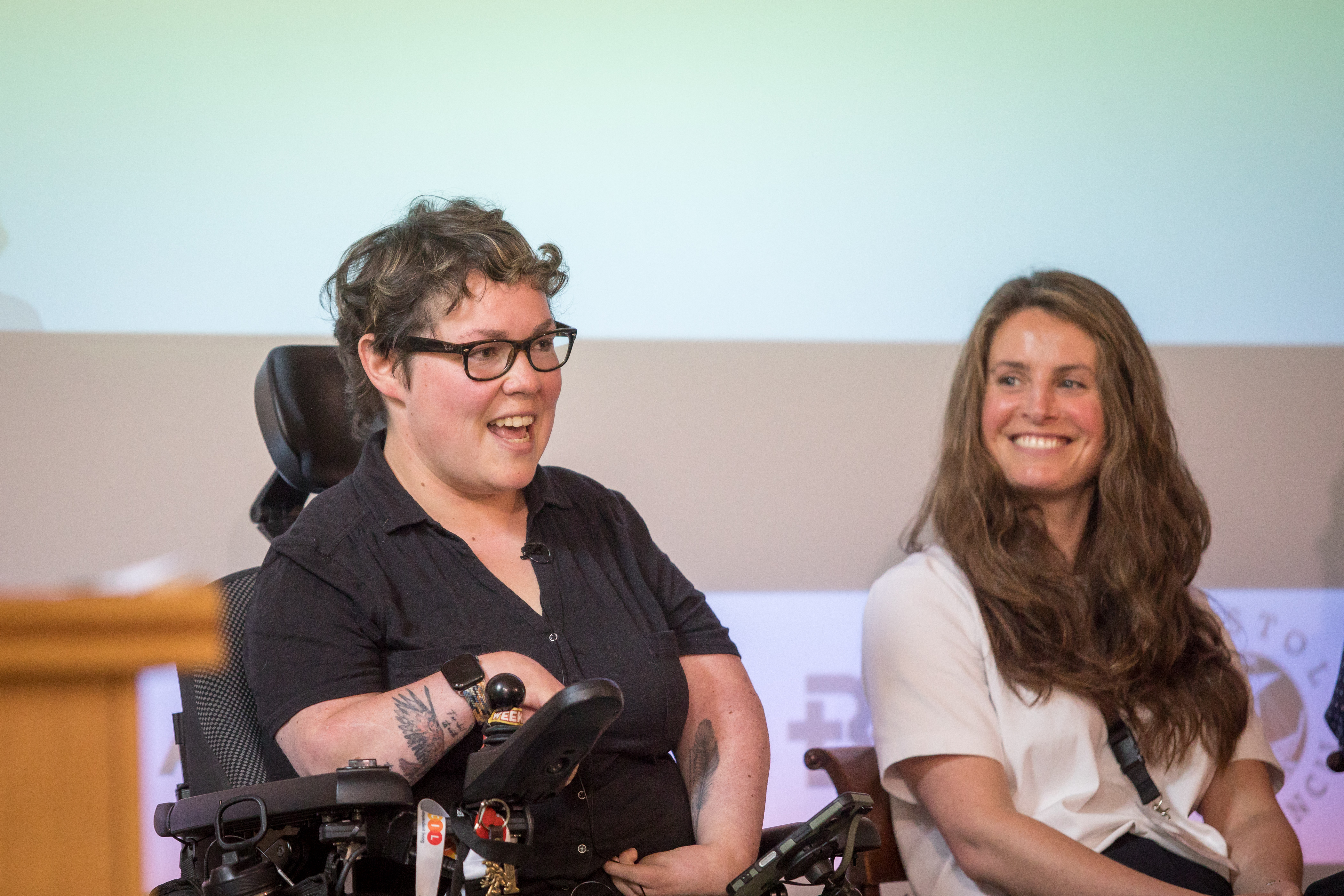
Our morning panellists were given five minutes each to share their contributions to creating walkable communities, using examples to show how projects can be evaluated to secure investment, as well as how to ensure interventions are accessible to all.
Kyrby Brown, Access Coordinator, West of England Centre for Inclusive Living (WECIL), told us about WECIL's work supporting development of schemes to make them accessible to disabled people, as well as sharing from her own lived experience the barriers she’s faced to making her everyday journeys. Kyrby highlighted the importance of shaping the public realm for wheeled users, so they need not always be reliant on vehicular transport – and told us of experiences in the United States specifically where streets were not designed to address this need.
Currently on secondment from Active Travel England, Sophie Edmondson, Programme Lead for Safe and Healthy Streets & Neighbourhoods at Camden Borough Council, spoke about her exciting work currently focussed on the Camden High Street pedestrianisation scheme. She spoke of the vitality of foundational democratic engagement with communities, and the efforts of a local authority to shape a space for people across a series of iterative measures – including experimental traffic orders and bus re-routing.
And up next Jodi Savickas, Associate Director in Movement and Place at AtkinsRéalis reminded us of the challenges of appraising the tangible value of walking, wheeling or cycling journeys and AtkinsRéalis proportional approach to project evaluation – focussed on a non-monetised, qualitative approach – in contrast to historically used measures like benefit-to-cost ratio. Jodi spoke about how specific schemes could fulfil a wide range of policy objectives, whilst also responding to the needs of the community and how understanding people’s journey complexity is vital to understand infrastructure need.
Seb Slater, Director at Shrewsbury BID, reminded us of the amazing success of Shrewsbury’s weekend pedestrian scheme, which saw a 25% increase in sales. Seb spoke of origins of the project that restricted through-traffic to Shrewsbury’s Town Centre, the wide support for the changes bringing that have been seen for the ambitious scheme, yet the importance of engaging with those sceptical to ensure they are supported through the process.
And Christopher Martin, Vice Chair of Trustees at Living Streets shared insights gathered from the third edition of Living Streets’ Pedestrian Pound report, from New York to London to Swansea - and spoke how the report can be used as an invaluable resource for campaigners, decision makers and transport professionals alike.
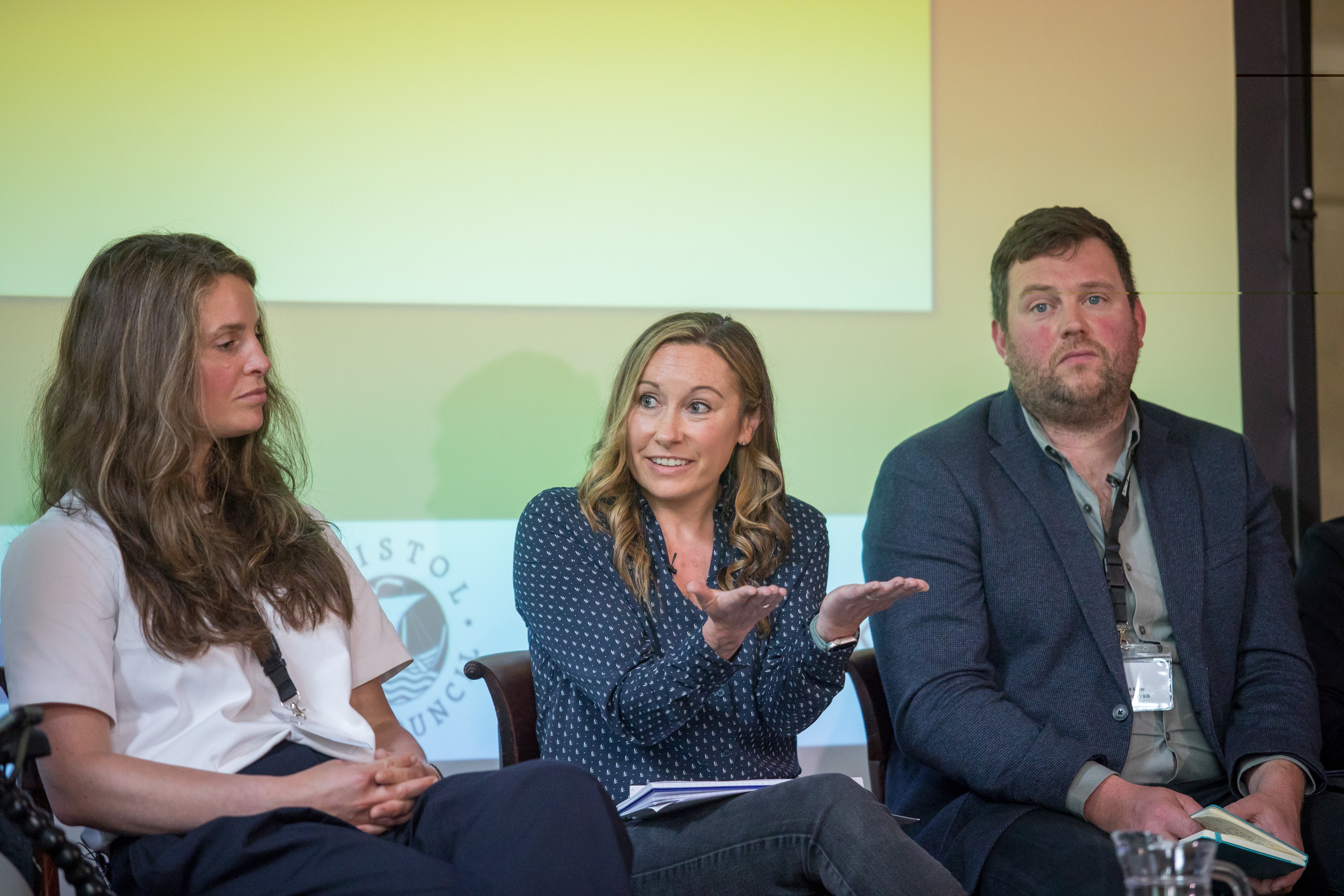
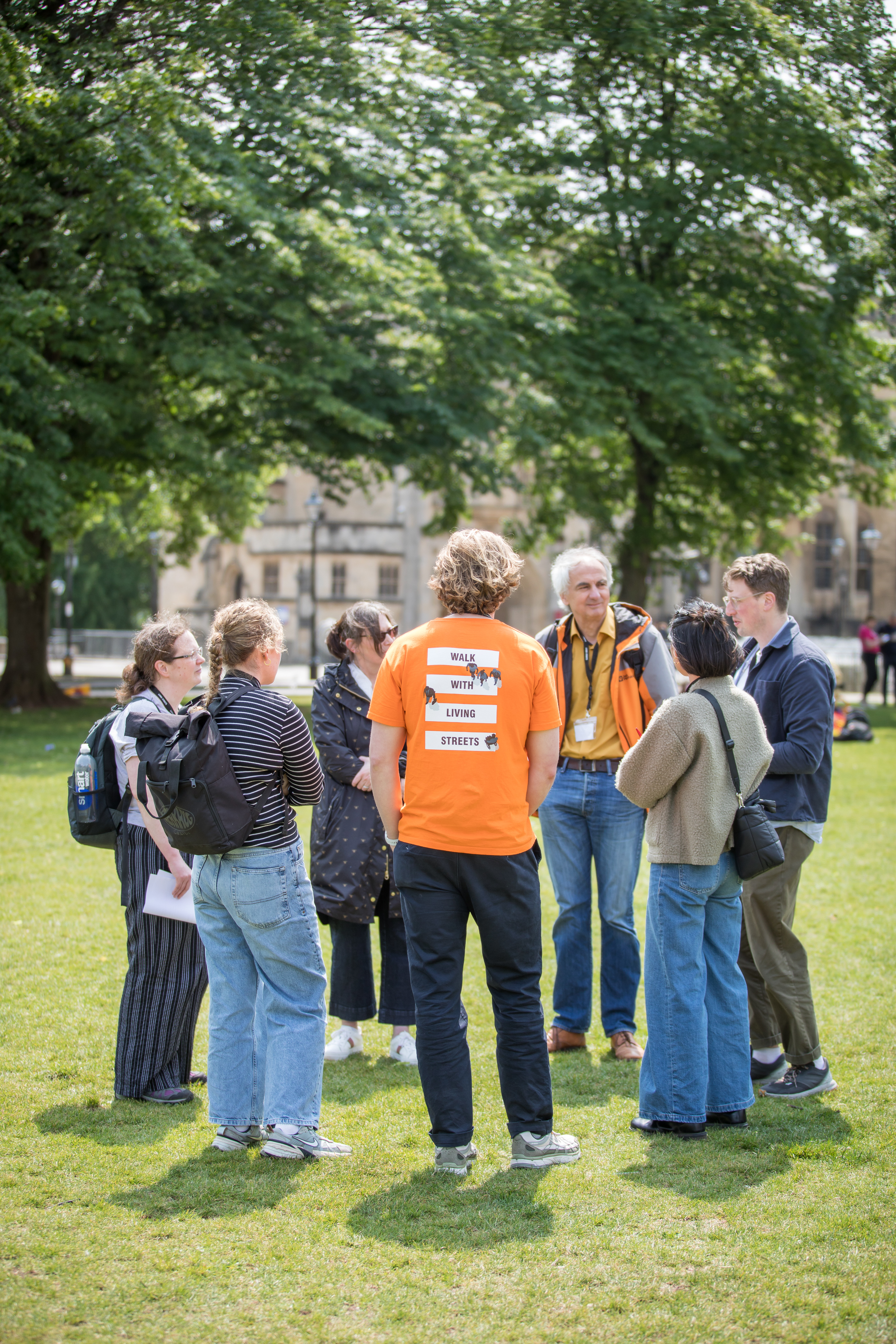
Walkshops
As ever, we offered delegates in Bristol the chance to explore our host city through the return of our ever popular walkshops. There were also online walkshops available to online delegates.
From the walk to school, pavement parking and intrusive advertising to regeneration projects and finding 'missing links' in Bristol's walking networks - we hosted a record 13 walkshops at this year's Summit, delivered by Living Streets, our friends and allies, who are all working to shape more people-friendly environments.
Our walkshops are an essential element of the UK Walking Summit, where delegates can see real world examples of successful interventions, but also also understand areas for improvement. We hope delegates take back the learnings from their walkshop and apply them in their local area.
Keep your eyes peeled for an upcoming blog by Grant from Tranquil City - whose walkshop explored how environmental quality affects walking decisions by guiding participants through contrasting urban environments.
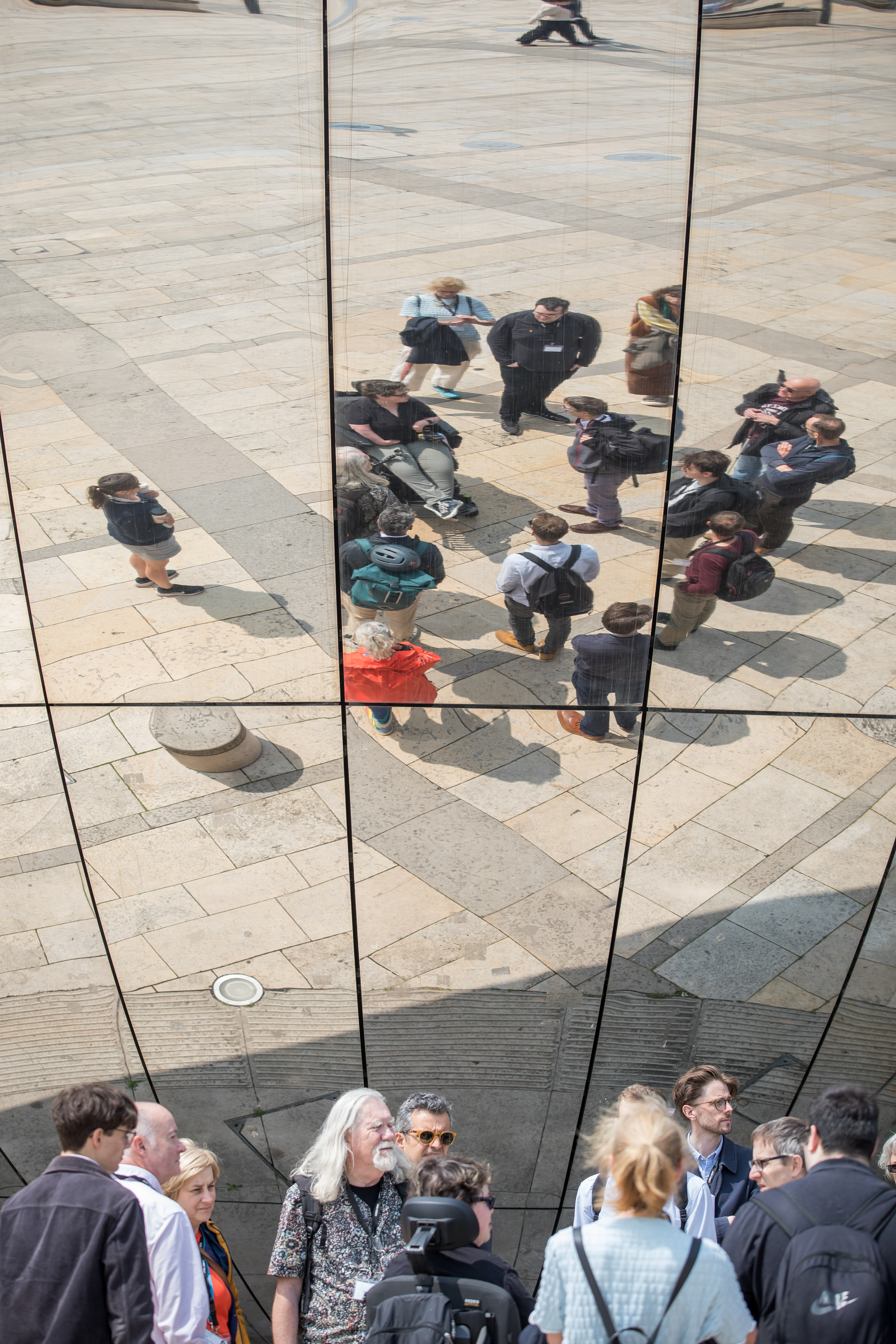

Back in the room and feeling energised for our afternoon session. Our keynote speaker, Professor Scarlett McNally, delivered an impassioned address telling us ‘How active travel can fix health, the NHS, social care & the UK economy’.
Scarlett’s tour de force took us through her breadth of professional and voluntary experience, including as an NHS surgeon, columnist and Deputy Director for the Centre for Perioperative Care.
She spoke of the many ways that active travel could address a multitude of societal challenges, including physical inactivity, air pollution, community, transport poverty and road traffic collisions.
Scarlett said that a sedentary lifestyle is the most dangerous thing you could do, and how 150 minutes per week of moderate exercise could reduce risk of a vast number of health issues: including dementia, diabetes and depression by 30%. Scarlett said both individuals and Governments needed to know both why we should and how we can embed active travel into our everyday lives – with the best form of exercise one that features in our daily routine.
Following Professor McNally, the afternoon’s panellists were asked to widen the lens of our discussion beyond economy and discuss how walkable communities connect communities, create healthier environments and improve public health.
Tanya Braun, Director of External Affairs & Fundraising at Living Streets, spoke about the expansion of our Pedestrian Pound research to focus on the additional societal benefits that come about from investing in everyday walking, that of connecting communities and improving public health and our environment. Tanya highlighted the real world example of the work done in Stobswell, in Dundee – where the local authority worked with a community group to implement more seating, inject colour and improve pedestrian infrastructure.
Dr Kiron Chatterjee, Professor of Travel Behaviour at The University of the West of England, talked about his research focussed on how people make their travel decisions and how people's access to transport and use of transport affects their life opportunities and wellbeing. Kiron spoke about the (in)equalities of walking, focussing specifically on Bristol, where walking levels and perception of a safe walking environment were more favourable amongst higher socio-economic groups. Kiron also spoke of the opportunity of walking to the individual, to reflect, to solve life problems and to daydream.
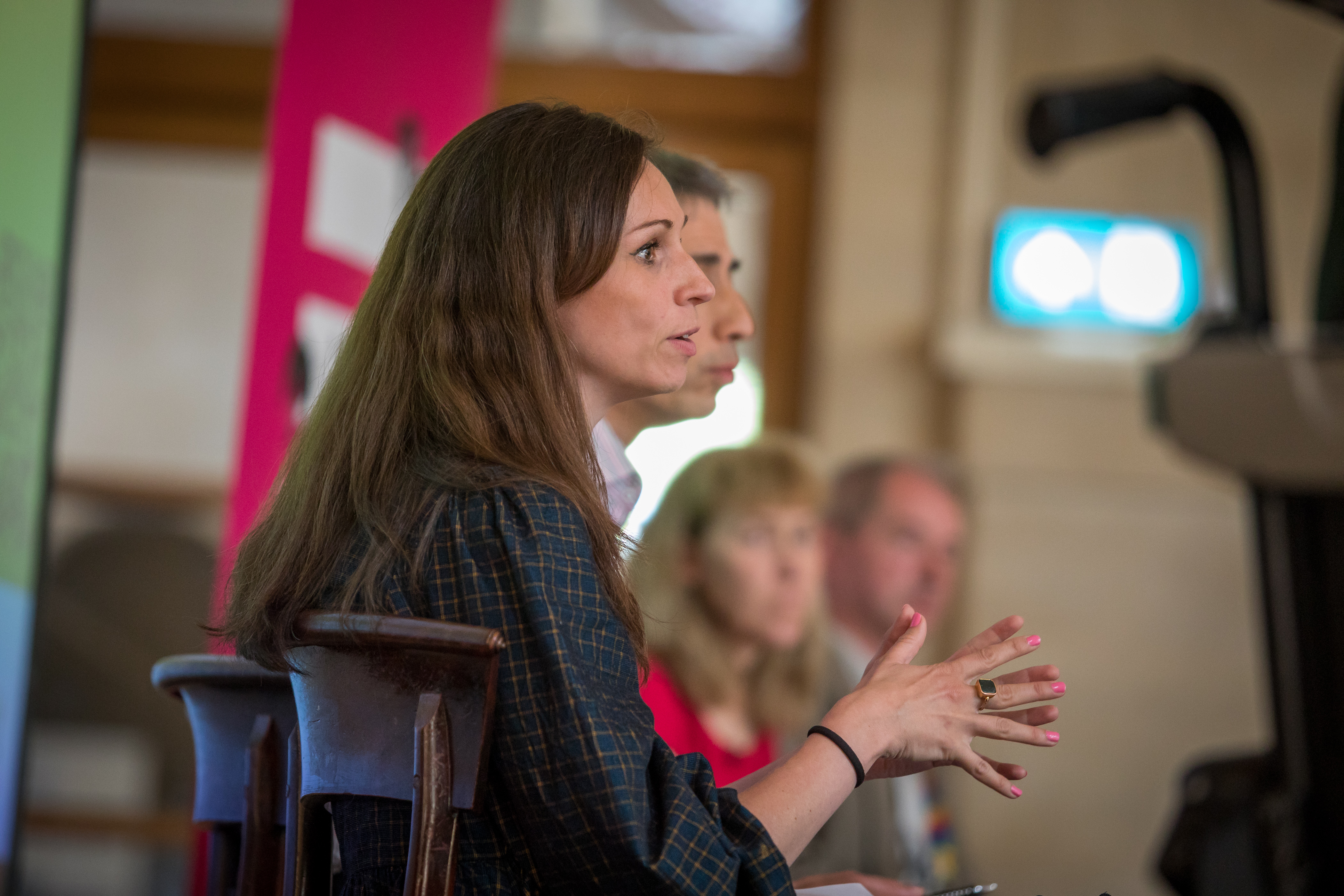
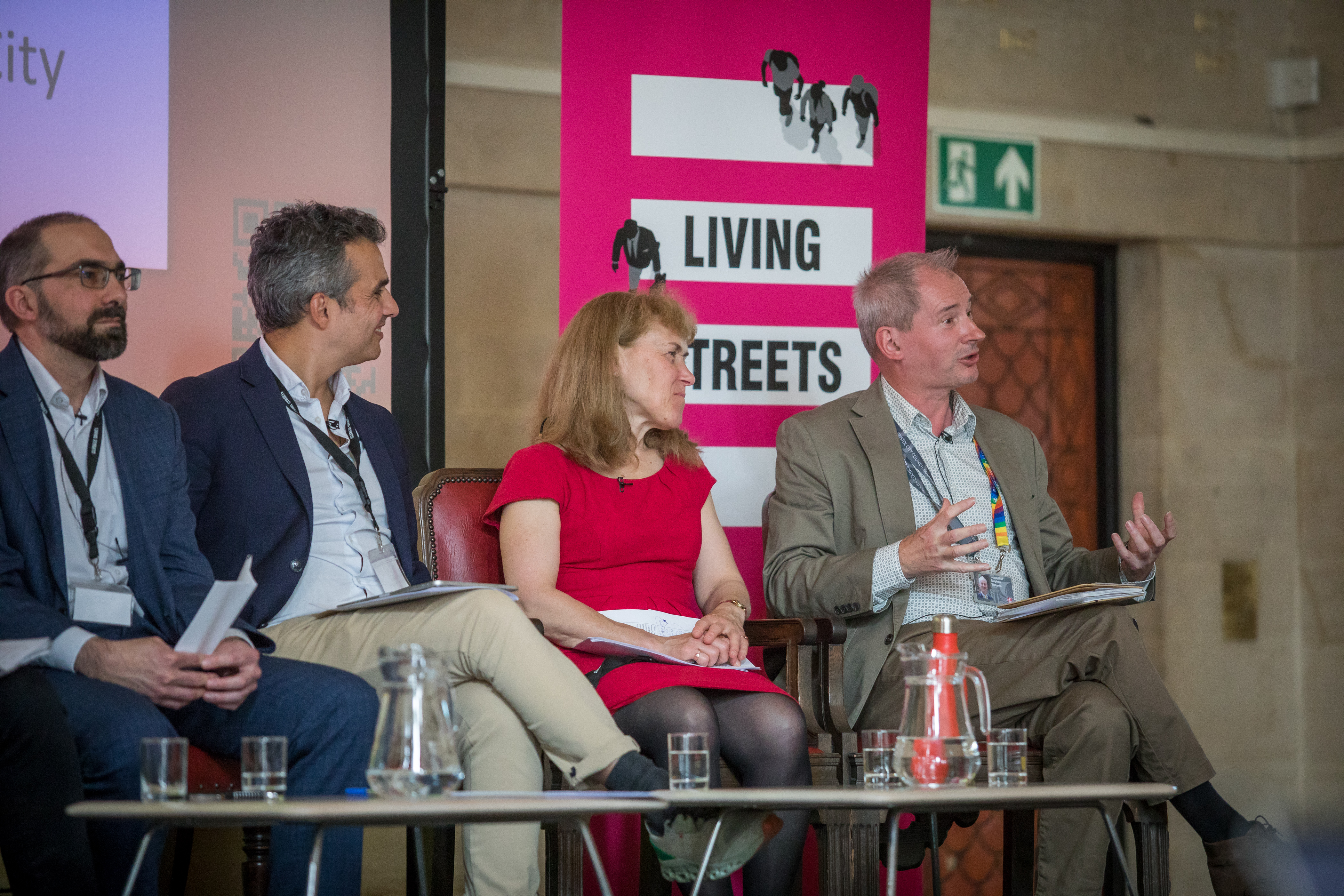
Daniel Godfrey, Active Travel Officer at AECOM, told us about his experience delivering AECOM’s active travel work in the East Midlands, focussed on direct engagement with residents to best foster behavioural change to sustainable modes. Daniel said that resources and materials to enable walking are the most frequently requested topic on the doorstep. He commented that qualitative data during monitoring and evaluation of schemes, focussed on feedback from users and how a street ‘feels’, provide a greater substance to make successful intervention, versus simply relying on trips or count data.
Andre Neves, Principal Inspector at Active Travel England, shared Active Travel England’s work in making walking, wheeling and cycling a safer and more accessible means of transport. This work includes developing best practice design standards, acting as a statutory consultee over medium-to-large planning applications and within social prescribing. Andre went into detail on the new Active Travel England-funded walking network pilot project, in collaboration with Living Streets and Footways CIC. Here, a mixed method approach utilising data, street audits and consultation will be used to identify missing links in our walking networks, focussed in five selected towns and cities across England.
Cllr Stephen Williams, Chair of the Public Health & Communities Committee at Bristol City Council, shared his inspiration from a recent trip walking around cities of the Baltic States to call for Bristol join up ‘piecemeal’ provision of walking infrastructure. Cllr Williams spoke of the importance in investment in public health prevention measures to improve people’s lives and reduce strain on health services and the economy. This is of essential importance as we see people living longer.

In summing up the day, Catherine Woodhead spoke of the desire, urgency and necessity to move forward with making walking and wheeling easier, and for delegates to continue shaping informative and creative ideas to lead this agenda.
The UK Walking Summit has shown the continual value of a multi-disciplined approach when advocating for investment to create walkable streets. Joined up messaging, incorporating arguments related to economy, health, community and environment - helps translate these messages across Government directorates and breaks down siloed thinking. We have the collective knowledge to provide Government with a broad case to create the conditions to enable walked and wheeled journeys that help address the wide range of societal challenges we face.
Our thanks to everyone who made our UK Walking Summit 2025 a success, to our walkshop leaders, our hosts Bristol City Council, and our sponsors AtkinsRéalis, AECOM, Arup and Redcliffe & Temple Business Improvement District.
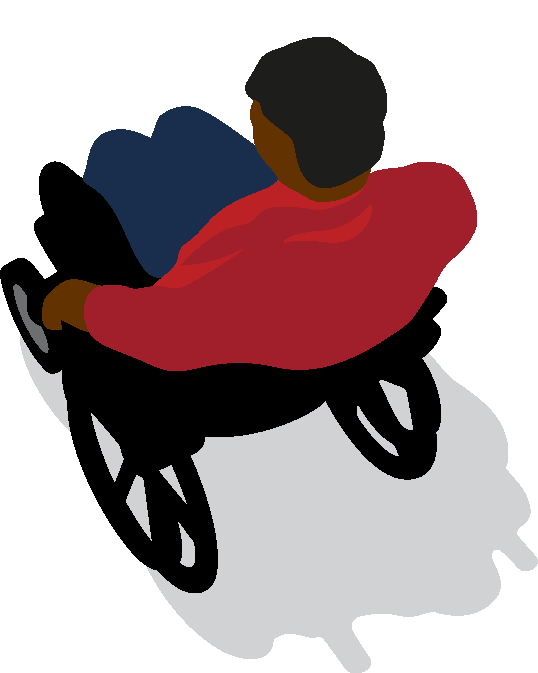
Be the first to find out about our future events by signing up to become a Member of Living Streets. Find out more about membership and other ways you can support our charity via the button below.









